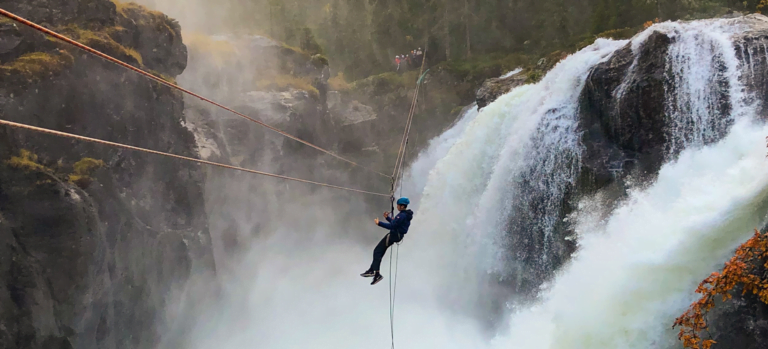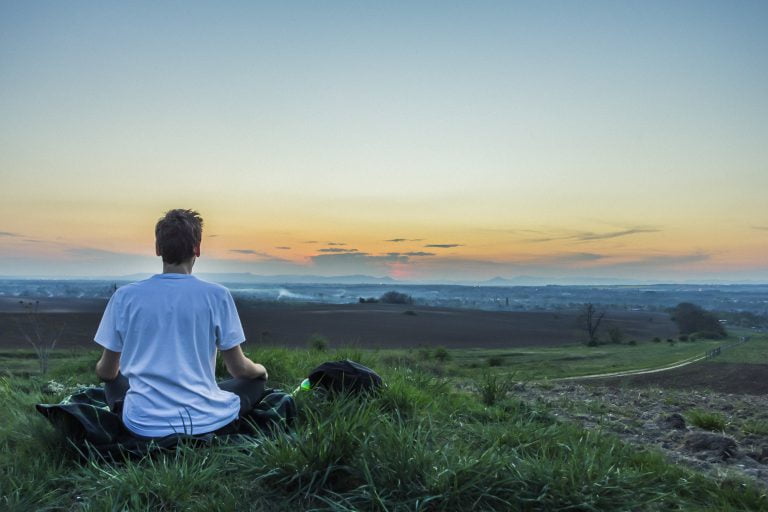In our fast-paced world, the ability to find tranquility in solitude and prayer is an art that is often overlooked. But the power it holds is transformative, leading to internal peace and a deepened relationship with the spiritual world. This blog post aims to explore the profound intersection of solitude and prayer, diving into their interplay and the profound impact they can have on personal growth and spiritual fulfillment. Join us as we discover the beauty of quietude and the solace found in prayer.
Practicing Solitude and Prayer
Practicing solitude and prayer can be achieved through various methods. One could start by setting aside a specific time each day for quiet reflection and prayer, away from the distractions and noise of daily life. This could be early in the morning before the world wakes up, or late at night when everything has settled down. Finding a peaceful location, such as a quiet room or a tranquil spot outdoors, can further enhance this practice.
Prayer doesn’t have to follow a certain format; it could simply be a conversation with a higher power, expressing gratitude, seeking guidance, or asking for strength. Keeping a prayer journal can be beneficial, as it allows one to reflect on their thoughts and feelings over time. Above all, patience and consistency are key, as the practice of solitude and prayer is a journey, not a destination.
Praying in solitude can take various forms, and individuals practice it according to their beliefs, preferences, and spiritual traditions. Here are some typical ways that people have practiced praying in solitude:
1. Meditative Prayer
Sitting quietly in contemplation, focusing on a specific thought, word, or phrase to deepen one’s connection with the divine or inner self.
2. Conversational Prayer
Engaging in a personal conversation with a higher power, expressing thoughts, feelings, hopes, and desires.
3. Gratitude Prayer
Offering thanks and expressing gratitude for blessings, experiences, and the people in one’s life.
4. Intercessory Prayer
Praying on behalf of others, asking for healing, guidance, or support for friends, family, or those in need.
5. Adoration Prayer
Expressing love and adoration towards a higher power, acknowledging its greatness and majesty.
6. Reflective Prayer
Engaging in self-reflection and asking for guidance in making decisions or understanding personal challenges.
7. Mindfulness Prayer
Combining prayer with mindfulness techniques, focusing on the present moment and connecting with a higher power or inner self.
8. Lectio Divina
A contemplative practice of reading sacred texts slowly, repeatedly, and reflectively to draw deeper insights and spiritual meaning.
9. Centering Prayer
Similar to meditative prayer, centering prayer involves quieting the mind and opening oneself to the presence of the divine.
10. Walking Prayer
Praying while walking in nature or a quiet environment, using the movement as a way to connect with the divine and find inner peace.
11. Breath Prayer
Combining prayer with deep breathing, using specific phrases or words in sync with inhalation and exhalation.
12. Journaling Prayer
Writing prayers, thoughts, and reflections in a journal to deepen one’s relationship with the divine or process emotions.
13. Prayer with Music
Using music or chants to enhance the prayer experience and create a meditative atmosphere.
14. Silent Contemplation
Sitting in silent contemplation, allowing thoughts to arise and pass, and seeking a deeper sense of connection with the divine.
15. Body Prayer
Incorporating physical movements or gestures into prayer to express emotions and intentions.
It’s important to note that praying in solitude is a personal and intimate experience. People may combine different prayer practices or create their own unique ways of connecting with the divine or finding inner peace. The key is to engage in prayer sincerely and authentically, allowing it to be a source of comfort, guidance, and transformation.
The Transformative Nature of Prayer
Prayer, beyond its religious connotations, signifies a profound human instinct to seek connection and understanding. It’s a form of communication, not necessarily with a divine entity, but possibly with one’s own inner self. This solemn act of introspection allows individuals to explore their thoughts, feelings, and aspirations, thereby fostering self-awareness.
In this context, prayer serves as a tool for self-reflection, a bridge connecting one’s present state of mind with their inner vision, aspirations, and values. It’s a personal journey, a dialogue between the conscious and the subconscious, a method of self-exploration that can lead to personal growth and improved mental well-being.
Prayer is a spiritual practice that has been observed to have profound impacts on mental well-being and emotional balance. It is seen as a form of meditation, where the individual focuses their mind and finds a sense of calm and peace. This state of tranquility can significantly decrease levels of stress and anxiety.
Moreover, prayer often involves expressing gratitude and seeking guidance, which can instill a positive perspective, resilience, and a greater sense of purpose in life. By providing a platform for reflection and self-expression, prayer can aid in emotional regulation, fostering an overall sense of well-being.
Understanding Solitude
Solitude is the deliberate act of spending time alone. It is a positive and healthy practice that allows individuals to reflect, recharge, and engage in self-discovery, without feeling lonely or isolated.
Throughout history, solitude has held a significant role in various spiritual traditions. In Buddhism, for instance, solitude is seen as a path to enlightenment, allowing for introspection and mindfulness. Many Hindu sages also sought solitude for meditation and self-realization. Christian mystics, such as St. John of the Cross, embraced solitude as a means to deepen their connection with God, while Islamic Sufi traditions similarly value solitude for spiritual refinement. Hence, across multiple spiritual traditions, solitude has been regarded as an essential tool for spiritual growth and understanding.
Modern perspectives on solitude have shifted to recognize its importance in today’s fast-paced world. In an age characterized by constant connectivity and ceaseless digital noise, solitude provides an essential sanctuary to reconnect with oneself. It allows for the cultivation of introspection, fostering personal growth and emotional resilience. Furthermore, solitude aids in stress management, granting individuals the space to decompress and regroup. It has become a vital tool in preserving mental health and promoting overall well-being in our hyper-connected society.
Solitude and Prayer: A Natural Pairing
Solitude often creates an atmosphere that is conducive to prayer and self-discovery. In the quiet and calm of being alone, distractions get minimized, allowing a person to focus more on their inner thoughts and feelings. This fosters introspection and personal reflection, making it easier to connect with one’s deeper self and the divine. The absence of external noise and influences aids in bringing clarity and perspective to one’s life, fostering spiritual growth and self-understanding.
Numerous historical spiritual leaders have sought solitude to enhance and deepen their prayer lives. Among them, Jesus Christ is a prominent figure who often retreated to secluded areas to pray, as mentioned in the Christian Bible. Similarly, the prophet Muhammad, the founder of Islam, spent significant periods in solitude in the cave of Hira, where he received the first revelations of the Quran. In Buddhism, Siddhartha Gautama, later known as Buddha, sought solitude under the Bodhi tree, achieving enlightenment through his meditative solitude. These leaders’ time spent in solitude not only deepened their own spirituality but also laid the foundation for major world religions.
The Impact on Life and Relationships
Solitude and prayer can be powerful tools for self-awareness and personal growth. When we immerse ourselves in silence and solitude, we create an environment that allows our thoughts and emotions to surface, away from the distractions and noise of the outer world. This introspection fosters self-awareness, inviting us to understand our strengths, weaknesses, desires, and fears.
On the other hand, prayer provides a platform to express our innermost feelings and aspirations, acting as a mirror reflecting our true selves. It connects us with our spiritual essence, guiding us through our journey of personal growth. Together, solitude and prayer form a synergy that leads to a profound understanding of ourselves and our paths in life.
When we set aside time for solitude, we create an opportunity for introspection, self-awareness, and clarity of thoughts. This increased self-understanding promotes healthier interactions with others, as we are more cognizant of our actions, responses, and emotions. Similarly, prayer is not merely a spiritual practice, but a moment to quiet our minds, focus our thoughts, and cultivate empathy. By praying for others, we nurture a sense of love, compassion, and understanding towards them, fostering stronger, more meaningful relationships.
Solitude and prayer often act as conduits for compassion and empathy. When we embrace solitude, it allows us to self-reflect and gain a deeper understanding of our emotions and experiences. This personal insight helps us relate better to what others might be going through, fostering a sense of empathy.
Similarly, prayer, regardless of religious belief, can serve as a powerful tool for focusing our thoughts and intentions toward others. It creates a mental space where we consciously consider the needs and struggles of the wider community. Thus, solitude and prayer, individually or combined, help cultivate a more compassionate and empathetic mindset towards our fellow humans.
Final Thoughts on Solitude and Prayer
Solitude and prayer, when embraced intentionally, weave a path towards a balanced and fulfilling life. They offer an opportunity to disconnect from the noise and haste of the world and reconnect with our inner selves. This transformative power, tucked within quiet moments of solitude and heartfelt prayers, acts as a compass, guiding us towards our true north: a life enriched with peace, wisdom, and a deeper sense of purpose. Embrace this journey of inner exploration; the rewards are profound and life-affirming.








